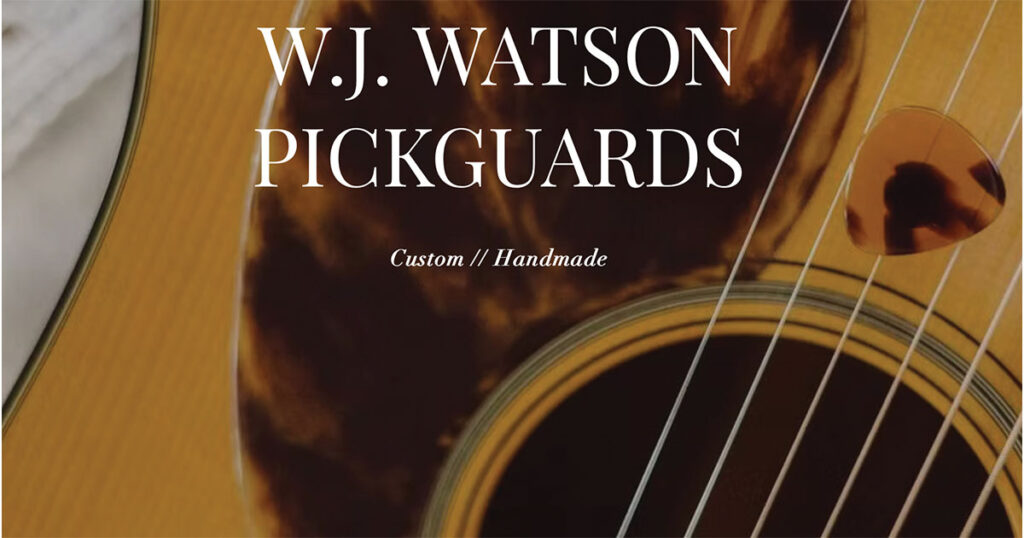Watson Pickguard
One of the easiest and least expensive ways to upgrade the look of your flattop guitar is changing out the stock pickguard for a custom-poured guard. These custom pickguards accurately resemble the mottled tortoiseshell style, tiger stripe, or browner, more aged-looking guards from the guitars of the 1930s and ‘40s. They first appeared years ago when master luthiers like John Greven and Mario Proulx started producing high-quality vintage-style guards for their own instruments because what they wanted wasn’t available commercially.
Today, guitarists can find quality custom pickguards from a number of additional sources, including StewMac, which carries the Proulx Tortoloid guards, as well as others such as Holter Pickguards.
One recent entry in this market is Willy Watson. Watson started his company in 2020 when he was dissatisfied with the available options for changing the stock “sterile” guard on his Martin.
“I quickly discovered what little options there were for custom, handmade pickguards. I wanted something more than a cleanly cut, beveled, and polished piece of sheet-stock: I wanted something one-of-a-kind that separated my instrument from all the rest. It didn’t take long before I discovered the work of John Greven who pioneered the method I use today—though, with a few of my own personal touches and improvements,” Watson reports on his website.
“What began as a small, personal, pet project has now expanded to include you. Fitting an instrument is a great fulfillment that I’m happy to be able to share with you,” he adds. “My approach to fitting is designed to be a one-of-a-kind experience which is reflected in your one-of-a-kind pickguard. Unlike cheap peel-and-stick guards which are designed around their planned obsolescence, we can work together to select or produce a guard which fulfills your unique vision.”
Watson’s stock colorations range from 1930s and ‘40s Vintage, to brown, reddish brown and dark tortoise, to his HB Standard and HB Boldguards resembling true vintage shell guards, which Watson describes as, “My take on the holy grail of tortoiseshell: Hawksbill. No turtles harmed!” And if you don’t see what you want, you can talk to Watson about other options.
On Watson’s website, he has examples of multiple shapes and sizes, and uses a clever sizing system based on the diameter of the rosette on the guitar where the guard is to be installed to ensure proper fit. You can even download and print out a specific template to be completely sure it fits your guitar before ordering.
The review pickguard arrived heavily padded in a sturdy box for protection. Watson even packed the guard in its own muslin drawstring bag to protect against any scratching during transit. Watson also provides precise directions for removing the old guard and installing the new one, for those brave enough to attempt such a modification on their prized guitar.
I purchased the dark 1930’s Vintage guard I wanted and followed Watson’s directions to remove the original cheap plastic sheet pickguard on my Eastman. It was a straightforward affair I’ve done several times in the past, using a hairdryer to loosen it, cleaning the area with naphtha to remove any adhesive residue, and installing the new guard using a couple of painter’s tape “hinges” to ensure its proper positioning. Anyone reasonably comfortable working on their guitar should be able to accomplish this pretty easily.
End result, it added a definite visual pop and instantly sets this guitar apart from all other Eastmans of that model. The guard oozes quality and provides a perfect upgrade to an already excellent guitar. If you’re interested in making such an upgrade to your newer guitar, Watson Pickguards offers an excellent option.

